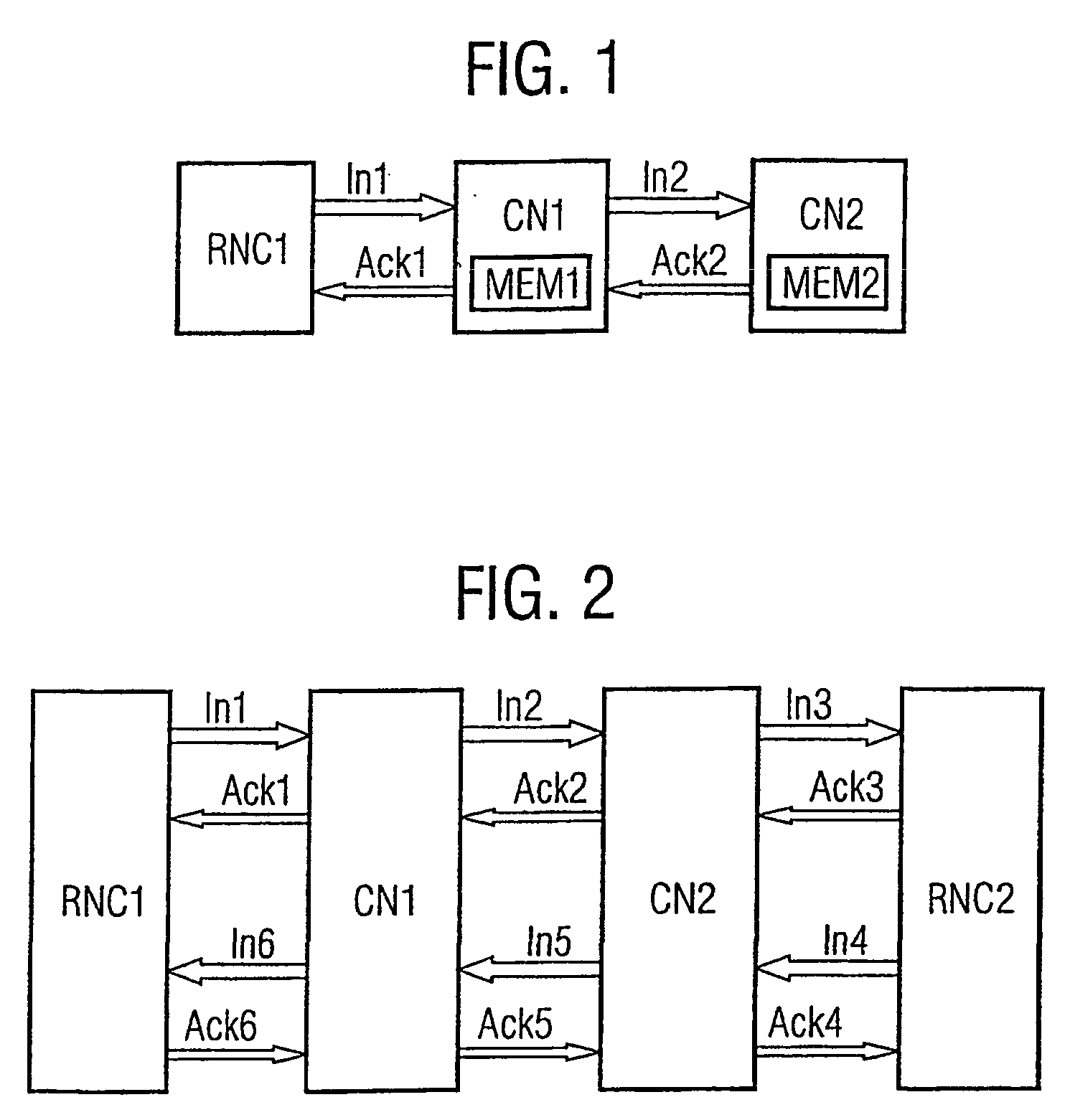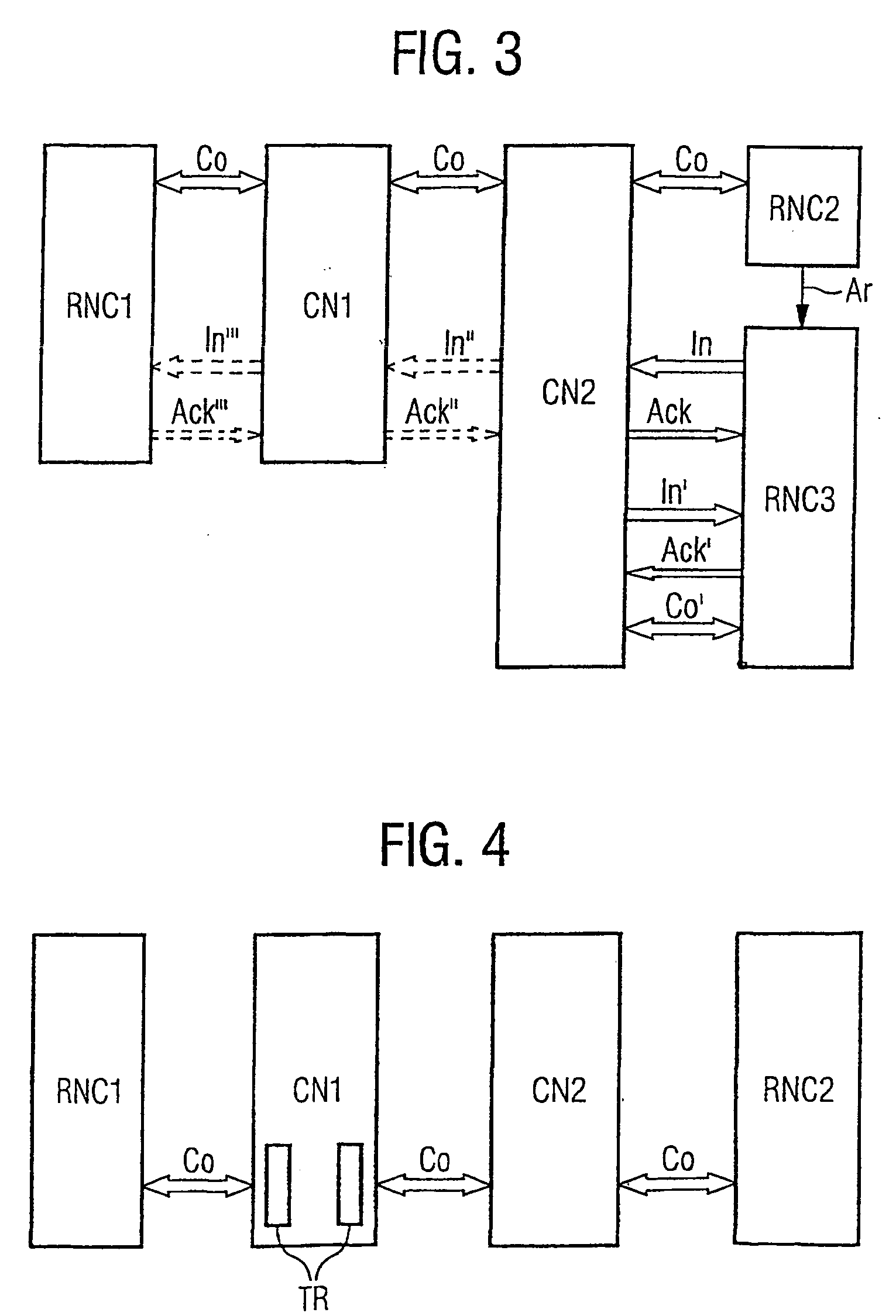Method for a connection through a core network
a core network and connection technology, applied in the direction of data switching network, connection management, digital transmission, etc., can solve the problems of requiring a large amount of signaling traffic, affecting the service level, and no control of the user plane, so as to achieve convenient control of the connection, the effect of simple method and efficient connection
- Summary
- Abstract
- Description
- Claims
- Application Information
AI Technical Summary
Benefits of technology
Problems solved by technology
Method used
Image
Examples
Embodiment Construction
. PREFERRED EMBODIMENTS OF THE INVENTION
[0045] In FIG. 1 the first steps of the initialization of a connection according to the invention is depicted. The connection is established according to the Iu user plane protocol, which is terminated in every core network node CN that may require modifying the user connection, for example for a supplementary service intervention. From a first access node RNCI a message In1 to initialize a connection is sent to a first core network node CN1. In the example, the message In1 is an Iu initialize packet data unit. A processing system of the first core network node CN1 extracts a set of parameters, especially RFCIs, from the message In1 and stores them in a memory MEM1. The first core network node CN1 sends an acknowledgement Ack1 of the message In1 to the first access node RNCI and creates a further message In2 comprising the parameter set. The core network node CN1 can decide to allow transparent Iu UP transmission after call establishment. In t...
PUM
 Login to View More
Login to View More Abstract
Description
Claims
Application Information
 Login to View More
Login to View More - R&D
- Intellectual Property
- Life Sciences
- Materials
- Tech Scout
- Unparalleled Data Quality
- Higher Quality Content
- 60% Fewer Hallucinations
Browse by: Latest US Patents, China's latest patents, Technical Efficacy Thesaurus, Application Domain, Technology Topic, Popular Technical Reports.
© 2025 PatSnap. All rights reserved.Legal|Privacy policy|Modern Slavery Act Transparency Statement|Sitemap|About US| Contact US: help@patsnap.com



